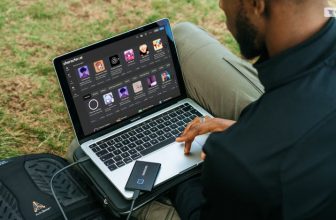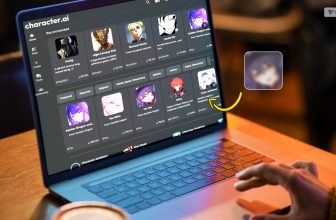
In a world where digital comes first, a branded mobile app is not a nice-to-have—it’s a must-have. You may be a new company, an online store, a service company, or a multinational organization.
A mobile app can turbocharge your brand interaction, simplify customer experience, and forge new business opportunities.
But wait until you’re ready to go development, launch, or scale mode, it’s imperative that all areas of your app be perfected, user-friendly, and in line with your brand’s objectives.
The Ultimate Mobile App Checklist For Your Brand
Welcome to The Ultimate App Checklist for Your Brand—a step-by-step, down-to-earth guidebook that will assist you in creating an app that provides value, converts visitors into customers, and drives your brand visibility.
1. Define Your App’s Purpose And Target Audience
Before you write one line of code or draw a UI wireframe, you should pose these questions to yourself:
- What’s the problem that your app solves?
- Who are you targeting?
- What’s the differentiator that the app provides over your site or other individuals’ apps?
- What do you want to accomplish with your business (brand awareness, monetization, loyalty, etc.)?
Pro Tip: Create customer personas and use cases prior to design and development.
2. Establish A Strong Branding Foundation
Your successful app is a reflection of your brand. Your branding should remain consistent across all areas.
Checklist
- Logo in different sizes and types (for app icons, splash screens)
- Brand colors and typography for mobile UI optimization
- Voice and tone for push notifications, in-app messaging, and onboarding
- Consistent design language of your website and other digital assets
3. Pick The Right Type And Platform Of App
- Native App (iOS, Android): Ideal for performance and complicated features
- Hybrid App (React Native, Flutter): Less expensive, quicker deployment
- PWA (Progressive Web App): Best for a web-first brand approach
Decision Factors:
- Budget and timeline
- Target users’ devices and behavior
- Necessary features (GPS, camera, offline support, etc.)
4. Features You Need To Have In Any Branded App
Here’s an operations checklist to get you to cover your bases:
| Feature | Description |
| User Authentication | Sign-up/login through email, phone, Google, or Apple ID |
| User Profile Management | Update info, settings, preferences |
| Push Notifications | Personalized alerts and updates |
| Search Functionality | Seamless navigation of app content |
| Social Sharing & Integration | Enable viral marketing by users |
| In-App Messaging/Chat | Support or community interaction |
| Feedback & Reviews | Allow users to rate or report problems |
| Analytics Integration | Monitor usage trends and KPIs |
| Dark Mode | More and more demanded by users |
| Offline Mode | Particularly valuable in low-connectivity regions |
5. Prioritize Security And Privacy
App security isn’t only about data leakage—it’s also about the fate of users.
Checklist:
- SSL/TLS encryption for data transfer
- GDPR/CCPA compliance
- Biometric authentication support (FaceID/Fingerprint)
- Sensitive data storage (e.g., use Keychain or EncryptedSharedPrefs)
- Application privacy policy
- Permission handling (location, camera, microphone)
6. Complete Testing
Don’t ship without thorough testing across various environments.
Types of Tests:
- Functional Testing: Do the features function?
- Usability Testing: Is it easy to use?
- Performance Testing: Does it crash or become slow during heavy usage?
- Security Testing: Is user data safe?
- Device & Platform Testing: Testing on various screen sizes and OS versions
Tools to Use: Appium, Firebase Test Lab, BrowserStack, Xcode Simulator, Android Emulator.
7. Integrate The Right Tech Stack And Tools
Your app must be easy to integrate with your current business setup.
· Backend & Infrastructure:
Firebase, AWS Amplify, or custom Node.js/PHP/.NET servers
· Analytics:
Google Analytics for Firebase, Mixpanel, and Amplitude
· Marketing & Engagement:
OneSignal (Push notifications), Braze (Customer engagement), CleverTap (Lifecycle marketing)
· Crash & Performance Monitoring:
Sentry, Firebase Crashlytics, BugSnag
8. eCommerce or Monetization Features (If Applicable)
If your brand app has commerce or monetization, make sure the following:
Checklist:
- Smooth and secure checkout flow
- Support for payment methods (credit card, Apple Pay, Google Pay, UPI)
- In-app purchases integration (if applicable)
- Cart reminders & abandoned cart notifications
- Recurring revenue subscription management
- Order processing integration with your ERP/CRM
9. Design A Frictionless Onboarding Experience
First impressions last—make onboarding shine to ensure retention.
Best Practices:
- Welcome screens onboarding with app benefit descriptions
- Guided tours of key feature sets
- Skip or browse freely feature
- Contextual tooltips
- Quick and intuitive signup process
10. Navigation And UX Design
User experience is the success or failure of your app.
Checklist:
- Intuitive navigation (tab bars, hamburger menus, swipes)
- Legible call-to-action buttons
- Mobile-first, thumb-tastic design
- Quick load times (aim for under 3 seconds)
- Accessibility features (support for voice-over, large text, color contrast)
11. Optimize App Store Presence (ASO)
Your app must be discoverable in app stores.
Checklist:
- Pertinent and keyword-rich app title and description
- High-quality app preview video and screenshots
- A/B test icons and app names (using Google Play Experiments)
- Visual and descriptive branding consistency
- Collect and respond to reviews
- In-app rating prompts 5-star
12. Launch Strategy And Pre-Marketing
Prior to publishing, have a well-thought-out launch strategy in place.
Tips:
- Build a landing page for the app
- Conduct a pre-launch email campaign
- Acquire beta testers via TestFlight (iOS) or Google Play beta (Android)
- Create a press kit and outreach to bloggers/influencers
- Utilize sites such as Product Hunt or BetaList
13. Post-Launch: Monitor, Iterate, Grow
Launching the app is only the first step.
Ongoing Activities:
- Track user behavior and retention
- Conduct onboarding and feature adoption A/B tests
- Push regular updates to patch bugs and add features
- Track reviews and feedback
- Implement loyalty or referral schemes to drive engagement
Key Metrics to Track:
- DAU/WAU/MAU (Daily/Weekly/Monthly Active Users)
- Day 1, Day 7, Day 30 retention rates
- Churn rate
- Session length
- Conversion rates (downloads → signups, signups → purchases)
Bonus: Legal, Compliance & Miscellaneous
Don’t overlook the back-end specifics that protect your brand.
Checklist:
- Terms and Conditions and Privacy Policy in-app
- Age rating and regional compliance
- Third-party media copyright/licensing
- ADA, WCAG 2.1 accessibility compliance
- Customer support/help desk integration (e.g., Zendesk, Intercom)
Final Thoughts
Building a successful branded app is more than a design and development exercise—it’s an ongoing strategic commitment.
From determining your audience to optimizing post-launch measurements, each step in the above checklist ensures that your app is not only functional but delightful and effective.
The secret to app success in 2025 is:
- Providing real value to users
- Exhibiting brand consistency
- Prioritizing security, performance, and UX
- Enabling data-driven decisions post-launch
Tick all the boxes in this ultimate app checklist, and your brand will be poised not only to launch an app—but build a successful mobile ecosystem.
Read Also:






